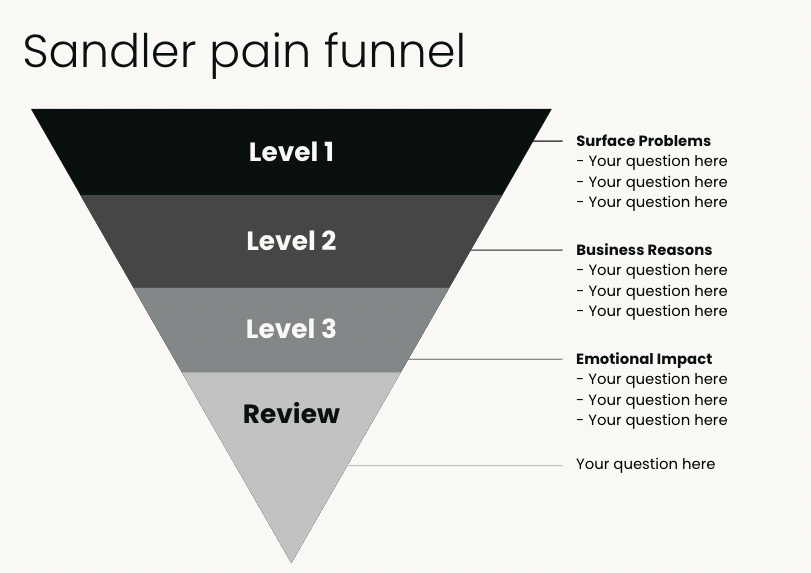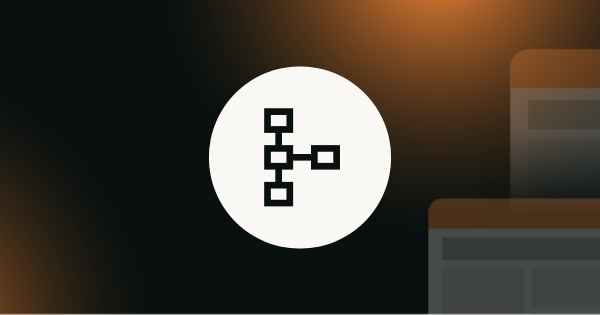The Sandler Pain Funnel is a strategic questioning framework used in sales to uncover a prospect’s pain points, enabling more effective and empathetic sales conversations. It's part of the Sandler Selling System, which you can read more about here.
The idea is that by guiding the prospect through a series of increasingly specific questions, the seller can help the prospect recognize the severity of their challenges, increasing the likelihood of closing the deal by presenting your solution as the answer to their problems.
The funnel is designed to progressively move the conversation from surface-level issues to the emotional and business impacts of those problems, creating a sense of urgency and the desire for resolution.
How to use the Sandler Pain Funnel
Here's a detailed breakdown of the template’s key levels and how to use them:
1. Surface problems
At the top of the funnel, you begin by identifying the general issues your prospect is facing. These are surface-level problems that the prospect is aware of but might not have explored deeply. Questions here are designed to encourage the prospect to share more about their challenges, such as:
- "Tell me more about that..."
- "Can you be more specific? Maybe give me an example?"
- "Why do you suppose this is happening?"
The goal at this stage is to gently prompt the prospect to open up and articulate their pain in a way that makes it clear they need a solution.
2. Business reasons
Once the surface-level problems are identified, the funnel moves into uncovering the business implications of these issues. These questions help quantify the impact the problem has on the prospect's business, making the pain more tangible. You might ask:
- "What have you already tried to solve this? How has that worked?"
- "Out of everything you could have chosen to solve, why this?"
- "What is the potential impact on revenue?"
This level helps both you and the prospect understand the scale of the problem in terms of lost opportunities, inefficiencies, or revenue impact. It highlights why solving this issue is critical from a business perspective.
3. Emotional impact
At the bottom of the funnel, the questions focus on the emotional and organizational impact of the problem. This level taps into how the issue affects people within the company and the urgency around resolving it. Questions here include:
- "Who else in your organization is aware of and affected by this issue?"
- "Is the organization committed to fixing it now?"
- "What happens if you do nothing?"
This step is where the prospect internalizes the personal or team-level impact of the problem, making the need for a solution more immediate. By addressing these emotional concerns, you build a deeper connection with the prospect and demonstrate empathy for their situation.
Why should you use the Sandler Pain Funnel template?
The strength of the Sandler Pain Funnel lies in its structured approach to deepening the prospect’s awareness of their challenges. By systematically guiding them through these levels, you can position your product or service as the ideal solution to alleviate both their business and emotional pain.
Using this template effectively can help salespeople do the following:
- Uncover hidden challenges that the prospect may not have considered.
- Establish a sense of urgency for resolving the issue.
- Build a stronger relationship by demonstrating empathy and understanding.
- Differentiate your solution based on a deep understanding of the prospect’s pain points.
Download your free template
If you’re not already a member, simply sign up to our free plan and refresh this page to access your template.






 Follow us on LinkedIn
Follow us on LinkedIn 


.svg)